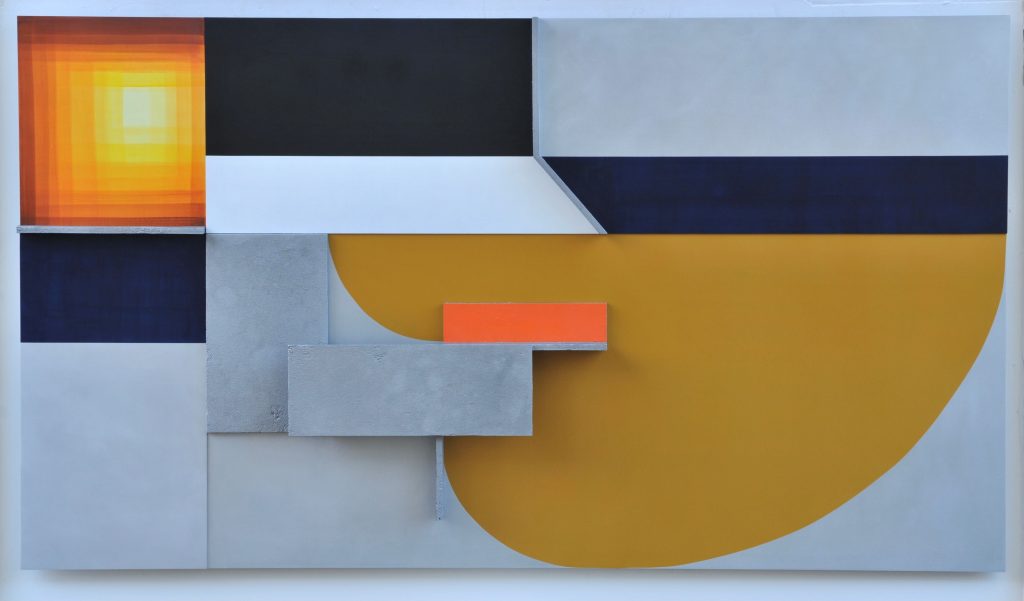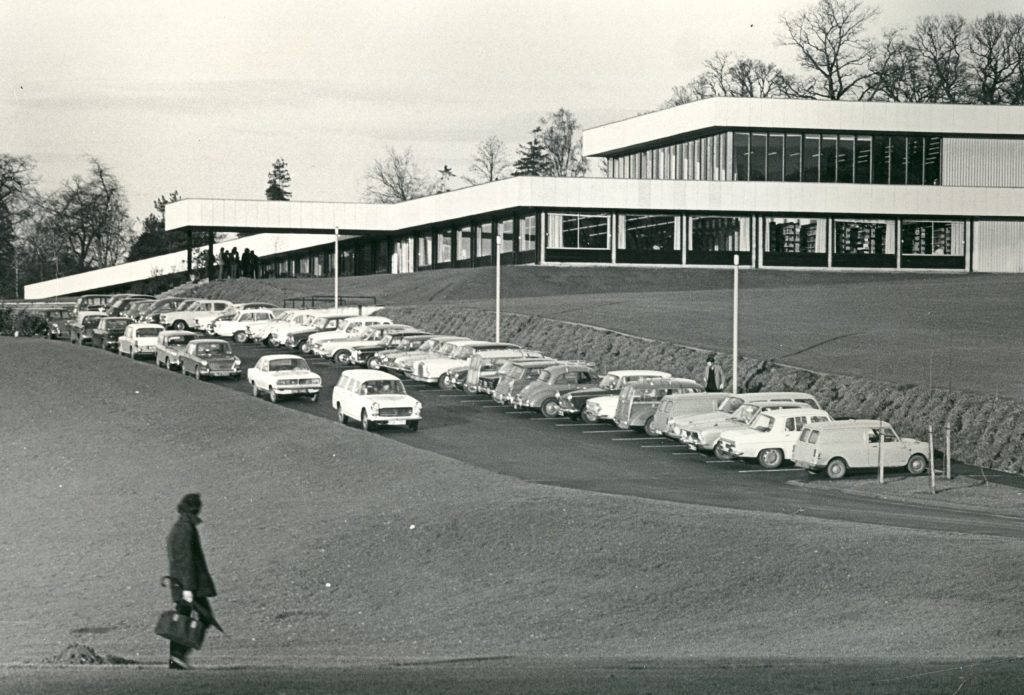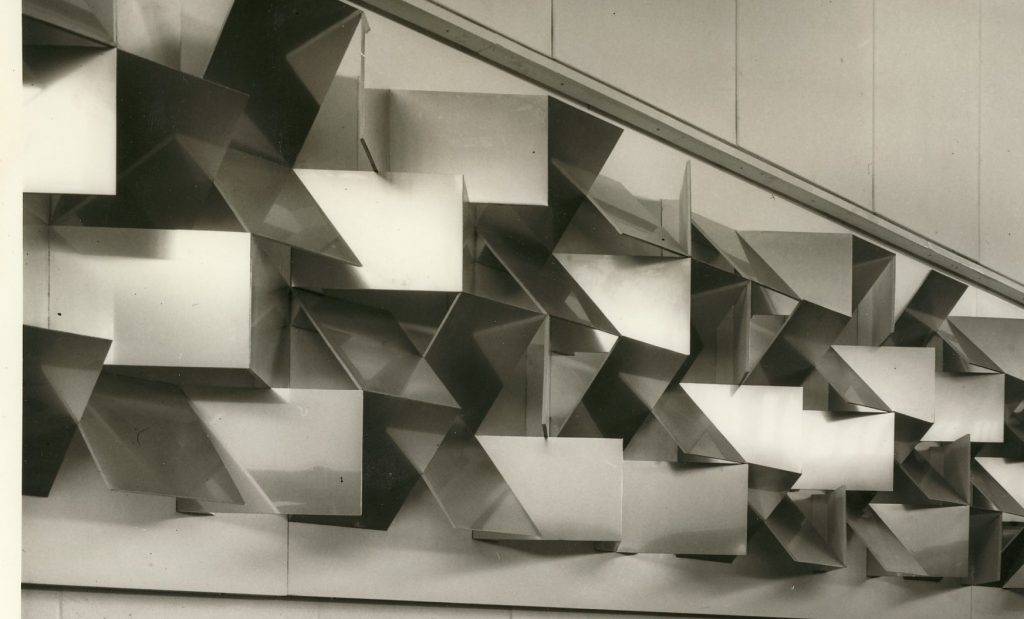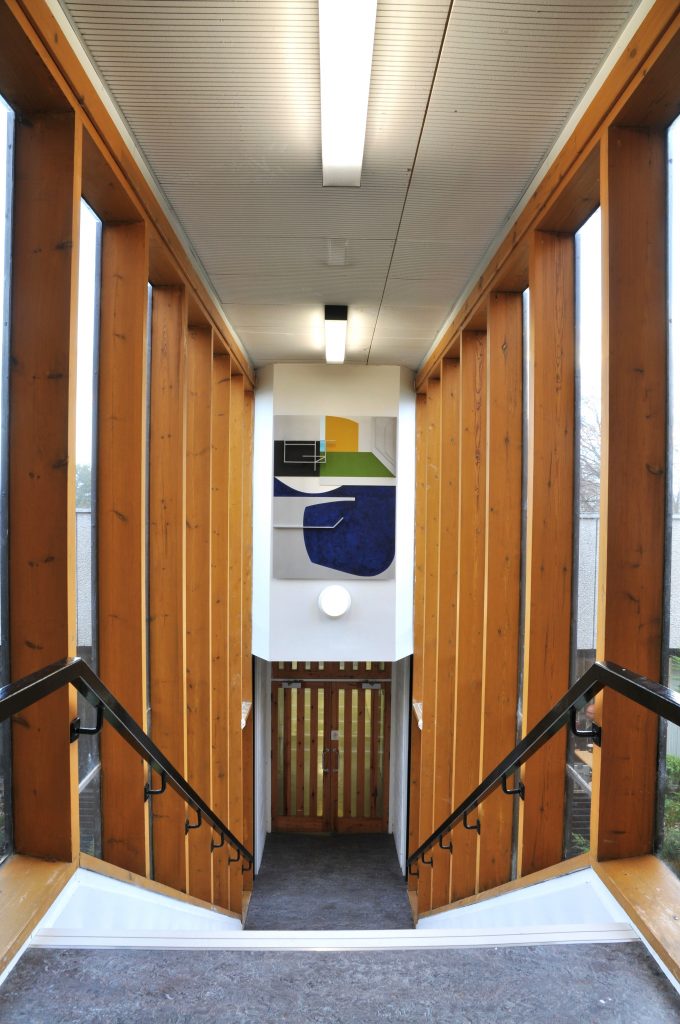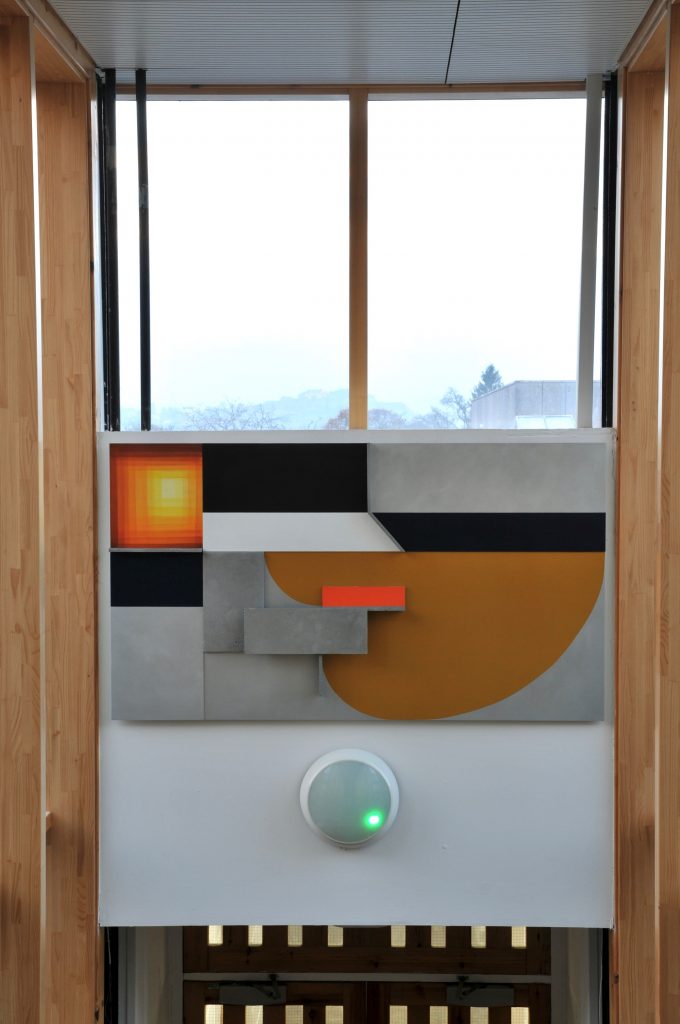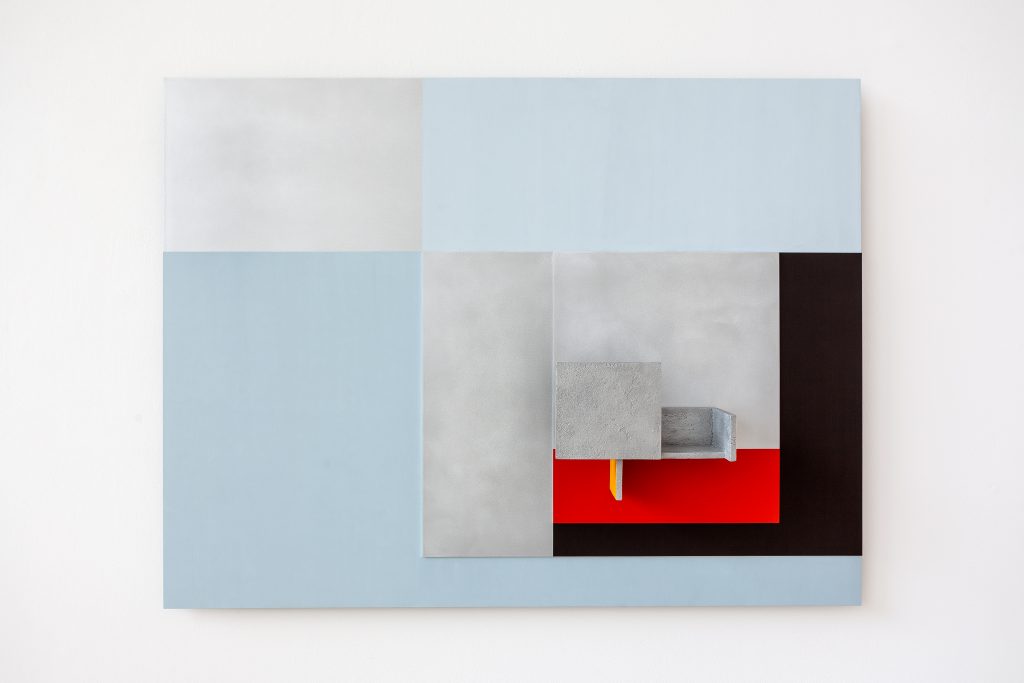
(Acrylic on Cast and Sheet Aluminium, 2019)
In early 2022, the University Art Collection was awarded funding by the National Fund for Acquisitions which enabled the purchase of three of artist Toby Paterson’s works. These works are currently on display in the Crush Hall.

As a result of this purchase, and through subsequent visits and conversations with the artist, Toby was commissioned to create two site-specific works for the stairwells of the Pathfoot building. The artist created these works in direct response to his appreciation of this building and its spaces, and views, as part of the University Art Collection’s 2022-23 ‘Space & Place’ theme.
The artist explains further:
‘The pair of ‘Open Grid’ works has been made specifically for the Pathfoot building in response to both its form and that of the wider campus at the University of Stirling. A motivating factor in much of my work is the need to make palpable visual and spatial experiences and accord value to places and contexts that are either under appreciated or rather misunderstood, these frequently being sites with complex histories that have gained interpretations that are more reductive than they deserve.
While the unique qualities of the campus at Stirling is generally widely recognised, the way in which the University’s architecture embodies the ideals of an age that now seem as distant from the vantage point of the early 21st century as the Victorian era would have done in the early 1970s is less well appreciated. It is rare now to find examples of the architecture and civic design of 50 years ago that have not had all but the last traces of their progressive origins expunged: The University of Stirling is a rare case where that progressive ambience is largely intact and it feels to me radically different from any equivalent institution as a result.
My first encounter with the University was as a visitor in 1991. Even then, at the age of 17, it struck me as ‘ different’ and an encounter with Mary Martin’s specially commissioned relief work is etched on my memory in so far as I found it challenging and intriguing yet simultaneously in harmony with its setting. Her work has subsequently gone on to be a significant touchstone for me in my own practice as an artist.
In the summer of 2022 I began the process of identifying locations of interest, a pair of stairwells within the Pathfoot building that seemed perfect in that they connected visually from interior to exterior while also satisfying my liking for locating artworks in circulation areas where they can become an element in the dynamic experience of a place. From spending time in the building, going exploring both inside and out into the wider campus and enjoying a day in the University Archive examining material relating its foundation, development and construction, ideas relating to form, colour and materiality began to develop.
What resulted is a pair of works in aluminium, painted and with relief elements, that attempt to be representative of that experience and of the discussions I had with Sarah Bromage and Jane Cameron [of the Art Collection]. In a way they are landscape paintings but not in the sense that they deal with a fixed point of view: The ‘Open Grid’ works are a concerted attempt to communicate a subjective sense of place that involves conjuring with the ramifications of a collective vision, form, politics, light, the individual imagination, colour, the passage of time and an often elusive hope for the future.’
The Art Collection is delighted to have been able to acquire these works which link the history of this important listed building of the 1960s with contemporary art of the present. We anticipate this artwork will be appreciated by future visitors to the Pathfoot for many decades to come.
Toby Paterson studied painting and printmaking at Glasgow School of Art (1991–1995) and also at the School of the Art Institute of Chicago (1993). He makes paintings, reliefs and constructions which explore the relationship between abstraction and reality. He has exhibited widely nationally and internationally.
